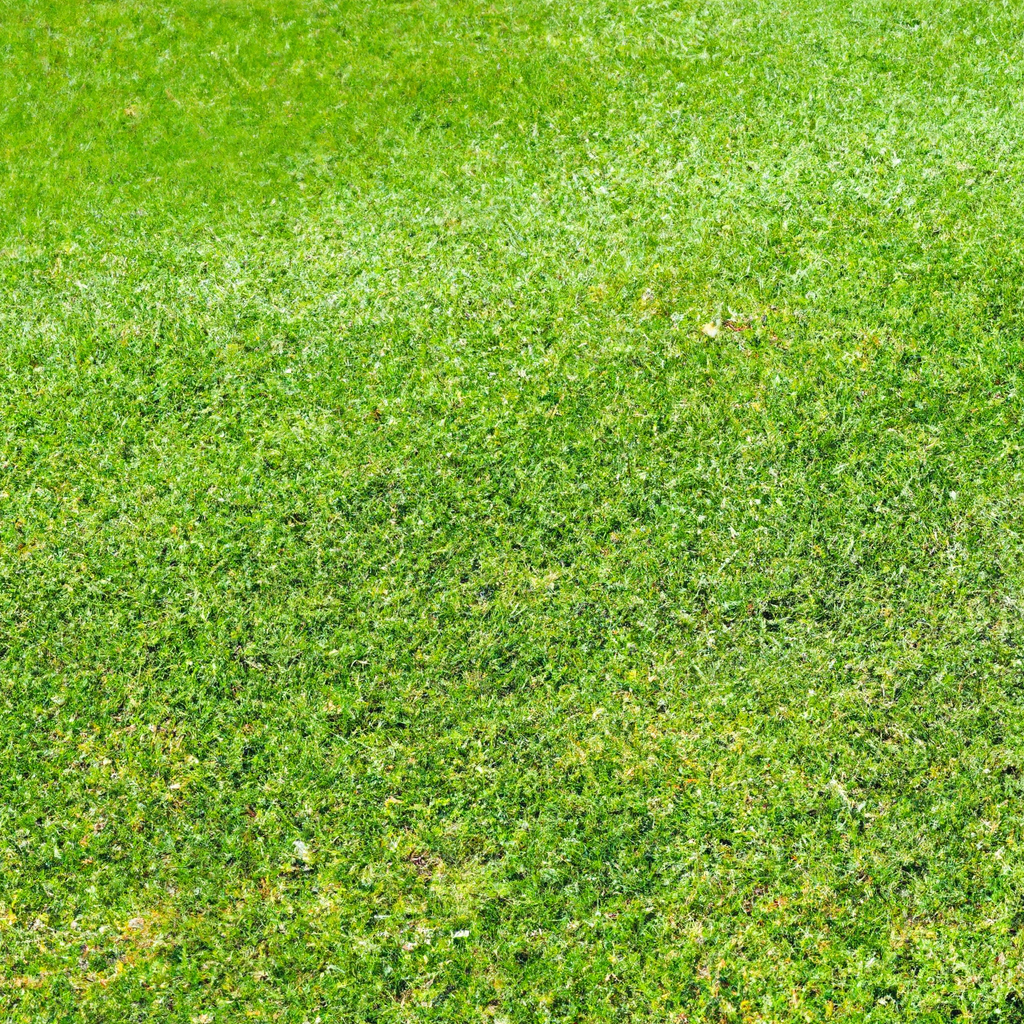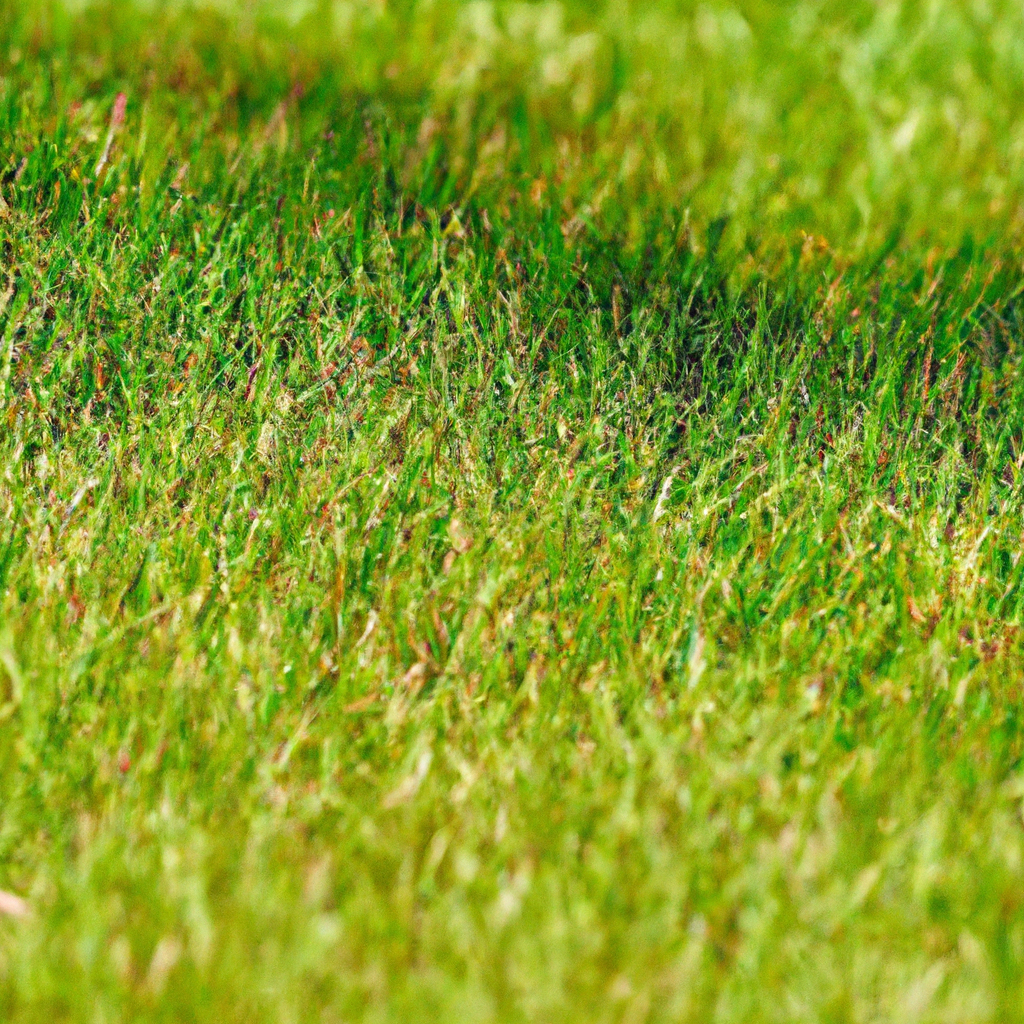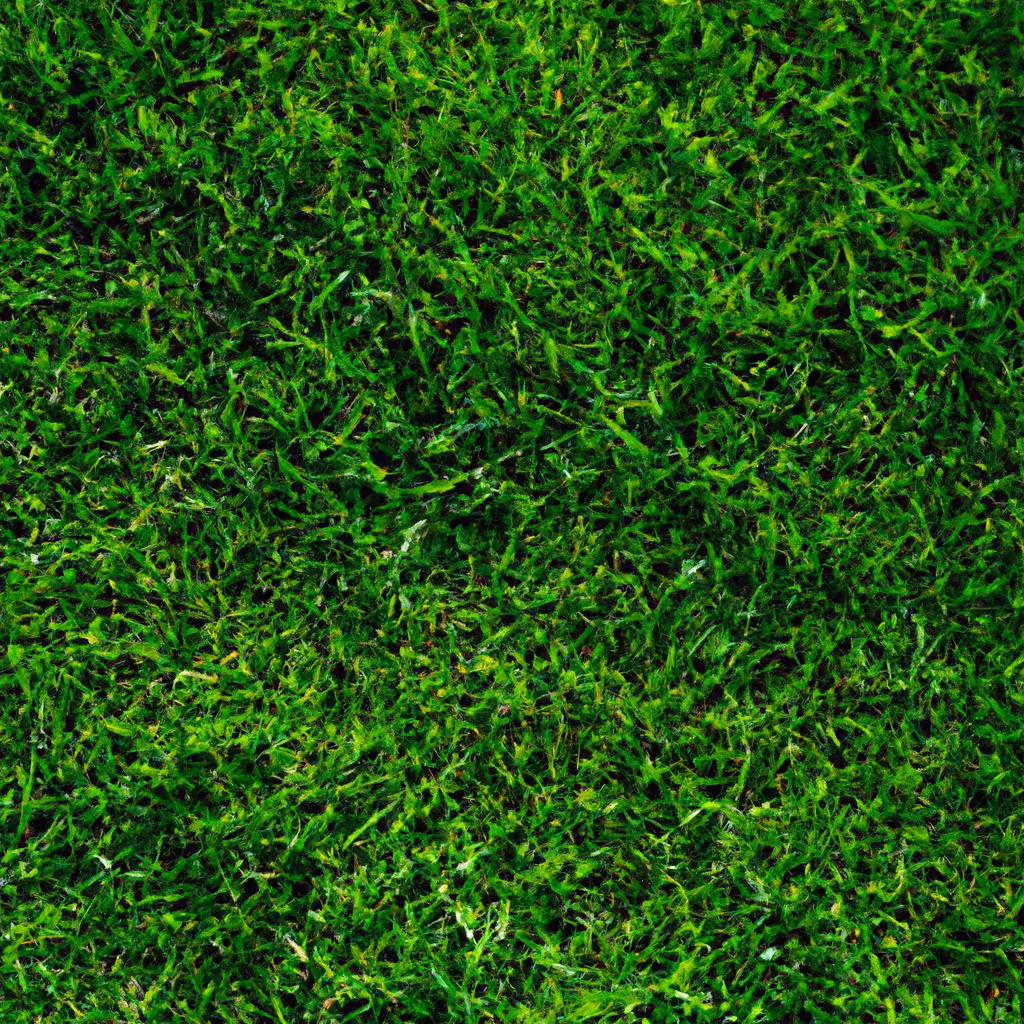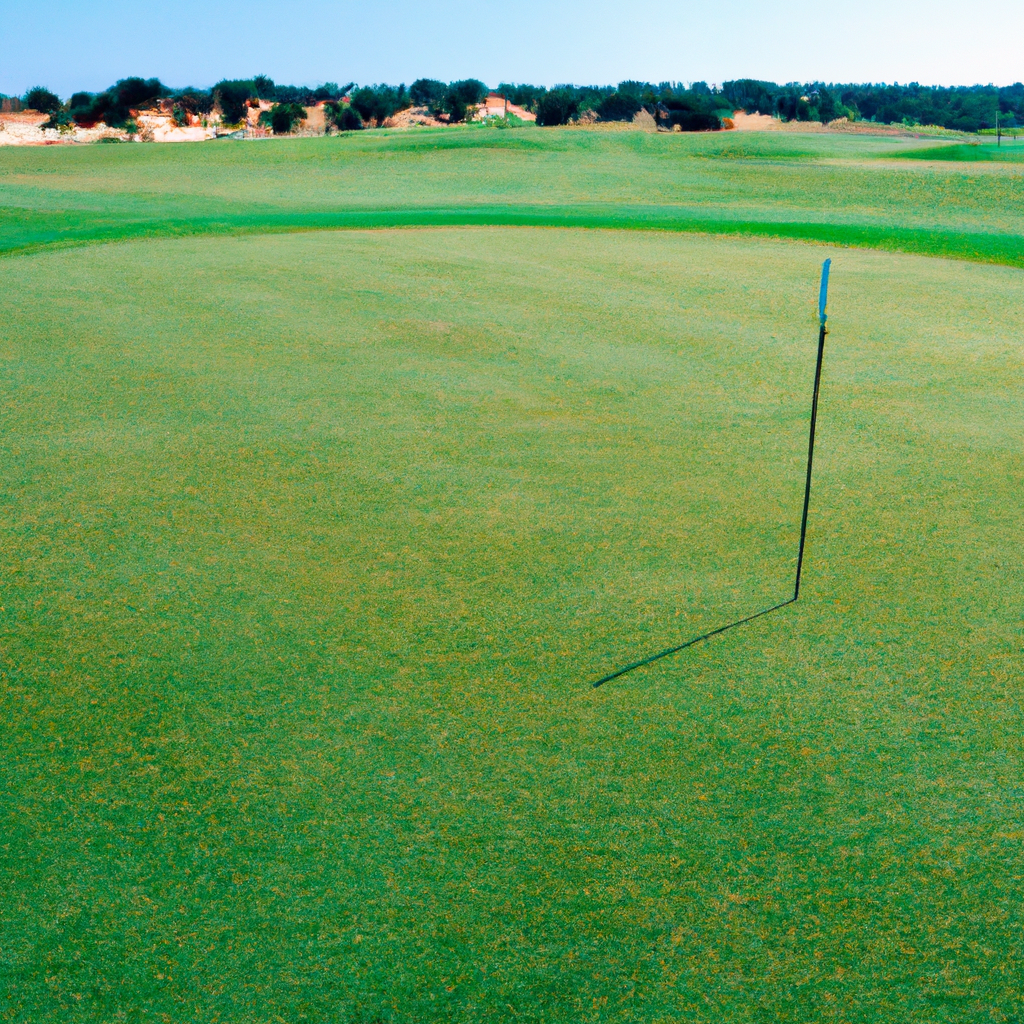Imagine strolling through a vibrant, meticulously maintained golf course, the sun warming your back as you admire the lush green landscape. Have you ever wondered what type of grass creates this idyllic scene? Golf courses around the world boast an array of grass species specifically chosen for their ability to withstand the rigorous demands of the sport. From the resilient Bermuda grass to the velvety smoothness of Bent grass, each species offers its own unique advantages and challenges. Join us as we explore the fascinating world of the various grasses used on golf courses and gain a deeper appreciation for the hidden heroes that contribute to the perfect playing surface.

Cool-Season Grasses
Bentgrasses
One type of grass commonly used on golf courses is Bentgrass. Bentgrass is known for its fine texture and dense growth, which provides a smooth and consistent playing surface. It can withstand close mowing and tolerates heavy foot traffic, making it an ideal choice for putting greens. Bentgrass requires regular maintenance, including frequent mowing, watering, and fertilization, to maintain its quality and appearance.
Kentucky Bluegrasses
Kentucky Bluegrass is another cool-season grass frequently found on golf courses. It has a beautiful dark green color and a medium texture. Kentucky Bluegrass forms a dense turf that is resistant to wear and tolerates moderate shade. It can withstand frequent mowing and recovers quickly from divots and ball marks. However, Kentucky Bluegrass requires sufficient watering and maintenance to keep it healthy and vibrant on golf courses.
Fine Fescues
Fine Fescues, including Chewings fescue, strong creeping red fescue, and slender creeping red fescue, are often used in combination with other grasses to create a diverse and visually appealing turf in golf courses. Fine fescues have a fine texture and are highly adaptable to various soil conditions. They have good shade tolerance and require less fertilizer and water compared to other grass species. Fine fescues are commonly used on fairways, roughs, and low-maintenance areas of golf courses.
Tall Fescues
Tall Fescue is a cool-season grass that has gained popularity on golf courses due to its ability to withstand heat and drought. It has a coarse texture and forms a deep root system, providing excellent durability and wear tolerance. Tall Fescue is often used in transition zones where both cool and warm-season grasses struggle to thrive. It requires less maintenance and water compared to other grass species, making it a cost-effective choice for golf courses.
Perennial Ryegrasses
Perennial Ryegrass is a cool-season grass known for its quick establishment and high tolerance to wear. It has a medium texture and forms a dense turf that can recover rapidly from damage. Perennial Ryegrass is commonly used on golf course fairways, tees, and roughs. It has good disease resistance and maintains its vibrant green color throughout the growing season. However, frequent watering and regular mowing are necessary to maintain its optimal performance on golf courses.
Warm-Season Grasses
Bermudagrass
Bermudagrass is one of the most popular warm-season grasses used on golf courses. It has a fine to medium texture and forms a dense turf that is highly resistant to wear and traffic. Bermudagrass thrives in hot climates and can withstand drought conditions. It has excellent recovery capabilities and can quickly repair divots and other damages. Bermudagrass requires regular maintenance, including frequent mowing, fertilization, and proper irrigation, to maintain its playability and aesthetic appeal.
Zoysiagrass
Zoysiagrass is another warm-season grass commonly found on golf courses. It has a medium texture and forms a dense, lush turf that feels great underfoot. Zoysiagrass has excellent wear tolerance and is highly resistant to diseases and pests. It thrives in tropical and subtropical climates and has good shade tolerance. Zoysiagrass requires proper irrigation, mowing, and fertilization to keep it healthy and looking its best on golf courses.
Seashore Paspalum
Seashore Paspalum is a warm-season grass that has gained popularity in coastal areas due to its excellent salt tolerance. It has a medium to coarse texture and forms a dense, dark-green turf. Seashore Paspalum has good wear resistance and recovers quickly from damage. It requires regular maintenance, including fertilization, irrigation, and periodic verticutting, to maintain its quality on golf courses. Seashore Paspalum is often used on courses near the ocean or with irrigation water high in salt content.
Buffalograss
Buffalograss is a warm-season grass that thrives in arid and semi-arid climates. It has a fine to medium texture and forms a low-growing, drought-tolerant turf. Buffalograss requires minimal watering and fertilizer compared to other grass species. It has good tolerance to heat and low mowing heights, making it suitable for fairways and roughs on golf courses. Buffalograss may not be as aesthetically pleasing as other grasses, but its low maintenance requirements make it an economical choice for golf courses in dry regions.
St. Augustinegrass
St. Augustinegrass is a warm-season grass that provides a lush and dense turf on golf courses. It has a coarse texture and forms an attractive carpet-like appearance. St. Augustinegrass tolerates shade and thrives in warm and humid climates. It requires regular watering, fertilization, and frequent mowing to maintain its optimal performance and appearance. St. Augustinegrass is commonly used on golf course fairways, roughs, and low-traffic areas where shade and humidity are prevalent.
Transition Zone Grasses
Tall Fescue
Tall Fescue, mentioned earlier as a cool-season grass, also thrives in transition zones where both cool and warm-season grasses struggle to survive. Its ability to withstand a wide range of temperatures makes it an ideal choice for areas with fluctuating weather conditions. Tall Fescue in transition zones requires careful management to ensure its health and appearance remain optimal.
Kentucky Bluegrass
Kentucky Bluegrass, known for its beautiful dark green color, can also be found in transition zones. It provides an aesthetically pleasing turf that withstands moderate shade and wear. Proper watering, fertilization, and maintenance are necessary to ensure the health and success of Kentucky Bluegrass in transition zones.
Perennial Ryegrass
Perennial Ryegrass, which is highly wear-tolerant, can thrive in transition zones where climatic conditions fluctuate. Its quick germination and establishment make it a popular choice when overseeding warm-season grasses. Adequate irrigation, fertilization, and regular maintenance are important to keep Perennial Ryegrass healthy and thriving in transition zones.
Bermudagrass
Bermudagrass, a warm-season grass, can also be used in transition zones where its natural growth may be limited. Enhanced management practices, such as overseeding with cool-season grasses, may be necessary to maintain a playable turf. Bermudagrass in transition zones requires careful attention to irrigation, mowing, and other maintenance practices to ensure its survival and quality.

Overseeding Grasses
Ryegrass
Ryegrass, specifically Perennial Ryegrass, is commonly used for overseeding warm-season grasses. It germinates quickly and provides a vibrant green color during the cooler months when warm-season grasses become dormant. Ryegrass requires careful irrigation, fertilization, and monitoring to maintain its health and appearance during the overseeding period.
Bentgrass
Bentgrass, mentioned earlier, can also be used for overseeding on golf courses. Its fine texture and ability to withstand close mowing make it an attractive choice for overseeding on putting greens. Proper management is crucial to ensure Bentgrass successfully establishes and coexists with the existing warm-season grass during the overseeding process.
Poa trivialis
Poa trivialis, or Rough Bluegrass, is another grass species commonly used for overseeding. It provides a lush, green appearance and is suitable for fairways and roughs during the cooler months. Adequate watering, fertilization, and maintenance are necessary to prevent the domination of Poa trivialis over the primary warm-season grass.
Putting Green Grasses
Creeping Bentgrass
Creeping Bentgrass, a cool-season grass, is the preferred choice for putting greens due to its fine texture and low growth habit. It provides a smooth and consistent playing surface and can tolerate close mowing. Regular maintenance practices such as frequent rolling, topdressing, and careful irrigation are necessary to maintain the desired putting green conditions.
Annual Bluegrass
Annual Bluegrass, also known as Poa annua, is another grass often found on putting greens. Although it germinates easily and produces a lush turf quickly, it has a more aggressive growth habit and can be problematic if not properly managed. Annual Bluegrass requires careful monitoring, regular topdressing, and precise irrigation to control its growth and maintain desirable putting green conditions.
Bermudagrass
Bermudagrass, a warm-season grass, can be used on putting greens in areas with suitable climate conditions. Specific varieties of Bermudagrass, such as hybrid Bermuda or ultradwarf Bermuda, are selected for their fine texture and high ball roll performance. Careful management including low mowing heights, consistent irrigation, and frequent topdressing are necessary to keep Bermudagrass putting greens in top shape.
Poa annua
Poa annua, or Annual Bluegrass, can also be found on putting greens. However, it is often considered a weed due to its aggressive growth and inconsistent playing surface. While some golf courses actively manage Poa annua, others strive to minimize its presence through strict cultural practices and selective herbicide applications.
Fairway Grasses
Bermudagrass
Bermudagrass, mentioned earlier as a warm-season grass, is commonly used on fairways in warm and arid regions. It forms a dense turf that can handle heavy traffic and provides good ball lies. Proper fertility programs, mowing schedules, and irrigation practices are necessary to maintain the health and playability of Bermudagrass fairways.
Zoysiagrass
Zoysiagrass, also mentioned earlier, is an ideal choice for fairways in warmer climates with moderate shade. It has excellent wear tolerance and creates a dense turf that withstands high traffic. Zoysiagrass fairways require meticulous maintenance practices, including proper mowing heights, regular aeration, and efficient irrigation, to ensure their optimal performance.
Perennial Ryegrass
Perennial Ryegrass, a cool-season grass, is often utilized on fairways for overseeding purposes in areas with a transitional climate. It provides an attractive green cover during the dormant period of warm-season grasses. Careful monitoring of irrigation, overseeding rates, and maintenance practices is crucial to prevent competition and ensure the success of Perennial Ryegrass on fairways.
Tall Fescue
Tall Fescue, which is adaptable to a wide range of climatic conditions, can also be used on fairways in transition zones. Its durability and tolerance make it suitable for areas where both cool and warm-season grasses are present. Regular fertilization, irrigation, and mowing are essential for maintaining healthy and appealing Tall Fescue fairways.
Tee Box Grasses
Bermudagrass
Bermudagrass, as mentioned before, is a common grass species used on tee boxes. Its dense and wear-tolerant nature makes it suitable for handling heavy traffic. Proper maintenance, including regular mowing, aeration, and adequate irrigation, is crucial for Bermudagrass tee boxes to provide consistent playing conditions.
Kentucky Bluegrass
Kentucky Bluegrass, known for its dense and attractive turf, is another popular choice for tee boxes. Its ability to withstand traffic and recover quickly from divots makes it suitable for high-traffic areas. Kentucky Bluegrass tee boxes require regular fertilization, irrigation, and careful mowing to maintain their health and aesthetics.
Tall Fescue
Tall Fescue, mentioned earlier as a cool-season grass, can also be used on tee boxes. Its wear tolerance and adaptability to different climates make it a versatile choice. Proper maintenance, including frequent mowing, aerating, and watering, is necessary to keep Tall Fescue tee boxes in optimal condition.
Zoysiagrass
Zoysiagrass, which forms a dense and attractive turf, can also be considered for tee boxes. Its wear tolerance and recovery capabilities make it suitable for high-traffic areas. Adequate fertilization, irrigation, and careful mowing practices are essential to maintain the health and playability of Zoysiagrass on tee boxes.
Rough Grasses
Tall Fescue
Tall Fescue, mentioned earlier, is commonly used in rough areas of golf courses. Its durability and adaptability to different climates make it an ideal choice for areas with minimal maintenance requirements. Tall Fescue roughs may not have the same manicured appearance as other areas, but they provide an aesthetically pleasing contrast to the fairways and greens.
Perennial Ryegrass
Perennial Ryegrass, with its wear tolerance and quick recovery capabilities, is often used in rough areas as well. Its ability to withstand heavy traffic and provide a lush green cover makes it suitable for creating an appealing visual contrast on golf courses. Adequate watering, fertilization, and mowing practices are necessary to maintain the health and appearance of Perennial Ryegrass in rough areas.
Kentucky Bluegrass
Kentucky Bluegrass, known for its dense and dark green turf, can also be found in rough areas. Its ability to withstand moderate shade and provide good wear tolerance makes it suitable for creating a visually appealing rough. Proper maintenance, including regular mowing and irrigation, is necessary to keep Kentucky Bluegrass roughs in a desirable condition.
Buffalograss
Buffalograss, mentioned earlier as a warm-season grass, can be used in rough areas of golf courses in arid regions. Its low maintenance requirements and good drought tolerance make it an economical choice. Buffalograss roughs may have a more natural appearance compared to other grass species, but they provide a unique character to the golf course landscape.
Collar Grasses
Fine Fescue
Fine Fescue, mentioned earlier, is often used in the collar areas of golf courses. Its fine texture and ability to blend well with other grass species make it a suitable choice for this transitional zone. Fine Fescue collars require regular maintenance, including mowing, irrigation, and fertilization, to maintain their uniform appearance and healthy growth.
Perennial Ryegrass
Perennial Ryegrass, known for its wear tolerance and fast establishment, can also be found in collar areas. Its ability to recover quickly from divots and heavy traffic makes it suitable for this zone. Adequate watering, regular aeration, and maintenance practices are necessary to ensure the health and playability of Perennial Ryegrass collars.
Zoysiagrass
Zoysiagrass, mentioned earlier as a warm-season grass, can be used in collar areas, especially in warmer climates. Its ability to withstand shade and provide a dense turf make it an attractive choice. Proper maintenance practices, including regular mowing and irrigation, are required to maintain Zoysiagrass collars’ optimal appearance and performance.
Home Lawn Grasses
Bermudagrass
Bermudagrass, frequently mentioned earlier, is a popular choice for home lawns due to its durability and low maintenance requirements. It forms a dense and attractive turf that can handle moderate foot traffic. Proper irrigation, mowing, and fertilization practices are necessary to maintain healthy and vibrant Bermudagrass lawns.
Kentucky Bluegrass
Kentucky Bluegrass, known for its dark green color and fine texture, is often used on home lawns. It provides an aesthetically pleasing turf that can tolerate moderate shade. Kentucky Bluegrass lawns require regular watering, mowing, and maintenance to keep them healthy and looking their best.
Tall Fescue
Tall Fescue, mentioned earlier, is a versatile grass species suitable for home lawns. Its durability and adaptability to various conditions make it a popular choice. Tall Fescue lawns require regular irrigation, mowing, and fertilization practices to maintain their health and appearance.
Fine Fescue
Fine Fescue, mentioned earlier, can also be used on home lawns. It has good shade tolerance and requires less maintenance compared to other grass species. Fine Fescue lawns require regular irrigation, mowing, and fertilization to ensure their optimal performance and visual appeal.









